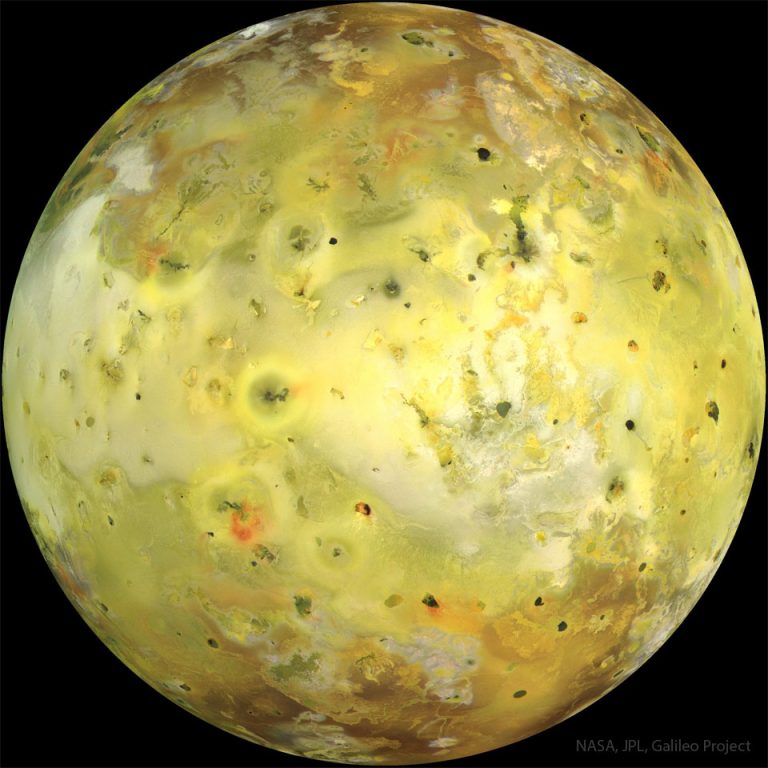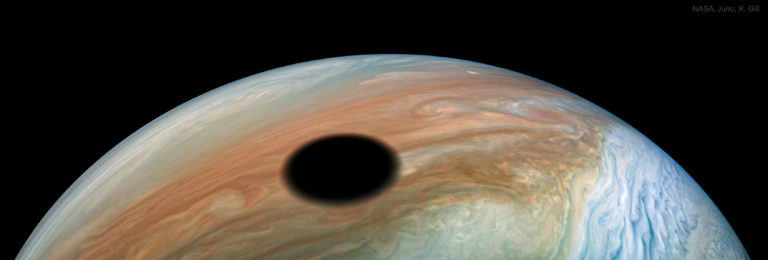朱诺航天器的木卫一影像
2023年10月23日 Moon Io from Spacecraft Juno Image Credit: NASA, JPL-Caltech, SwRI, MSSS; Processing & Copyright: Ted Stryk & Fernando García Navarro Explanation: There goes another one! Volcanoes on Jupiter‘s moon Io keep erupting. To investigate, NASA‘s robotic Juno spacecraft has begun a series of visits to this very strange moon. Io is about the size of Earth’s moon, but because of gravitational flexing by Jupiter and other moons, Io’s interior gets heated and its surface has become covered with volcanoes. The featured image is from last week’s flyby, passing within 12,000 kilometers above the dangerously active world. The surface of Io is covered with sulfur and frozen sulfur dioxide, making it appear yellow, orange and brown. As hoped, Juno flew by just as a volcano…



